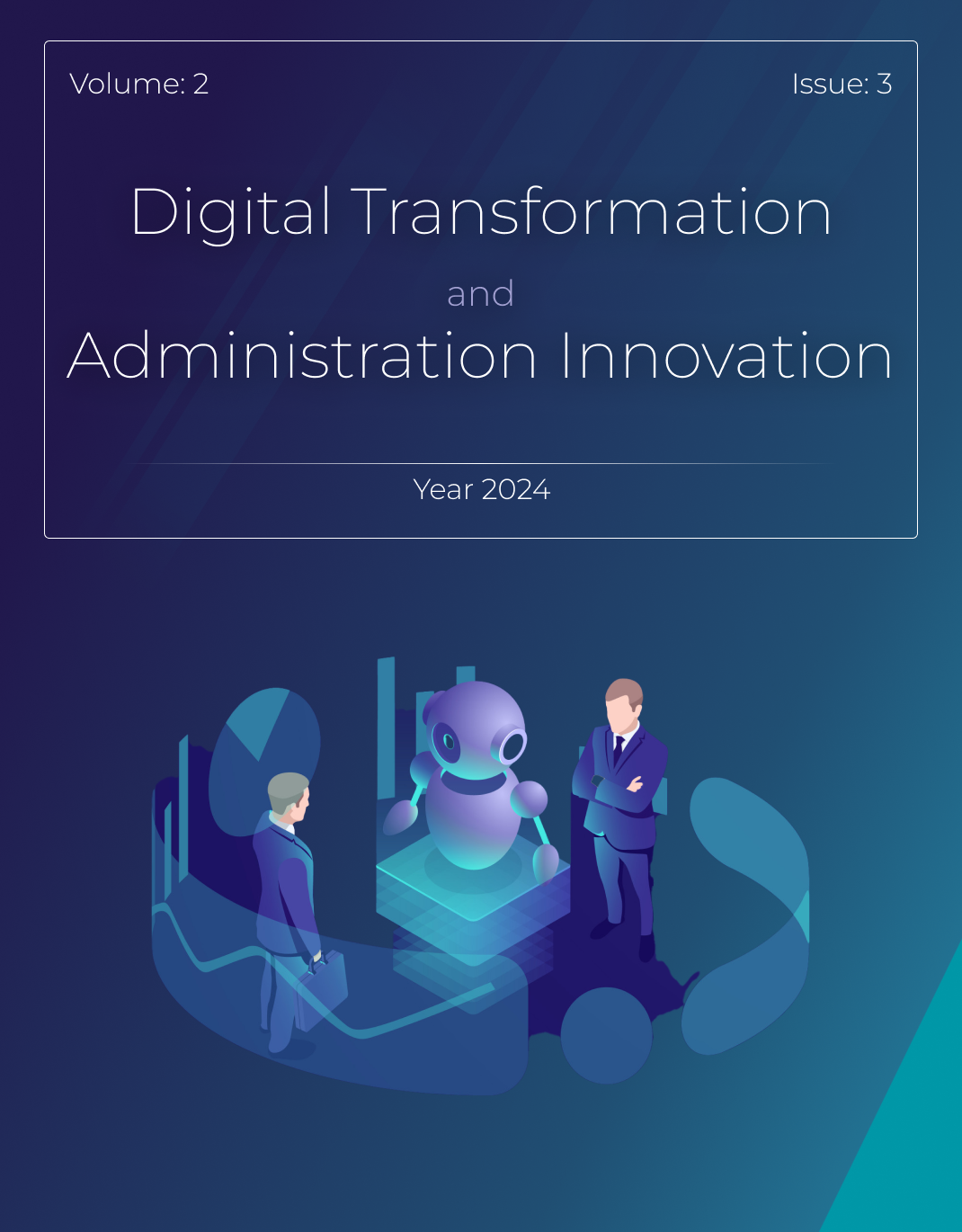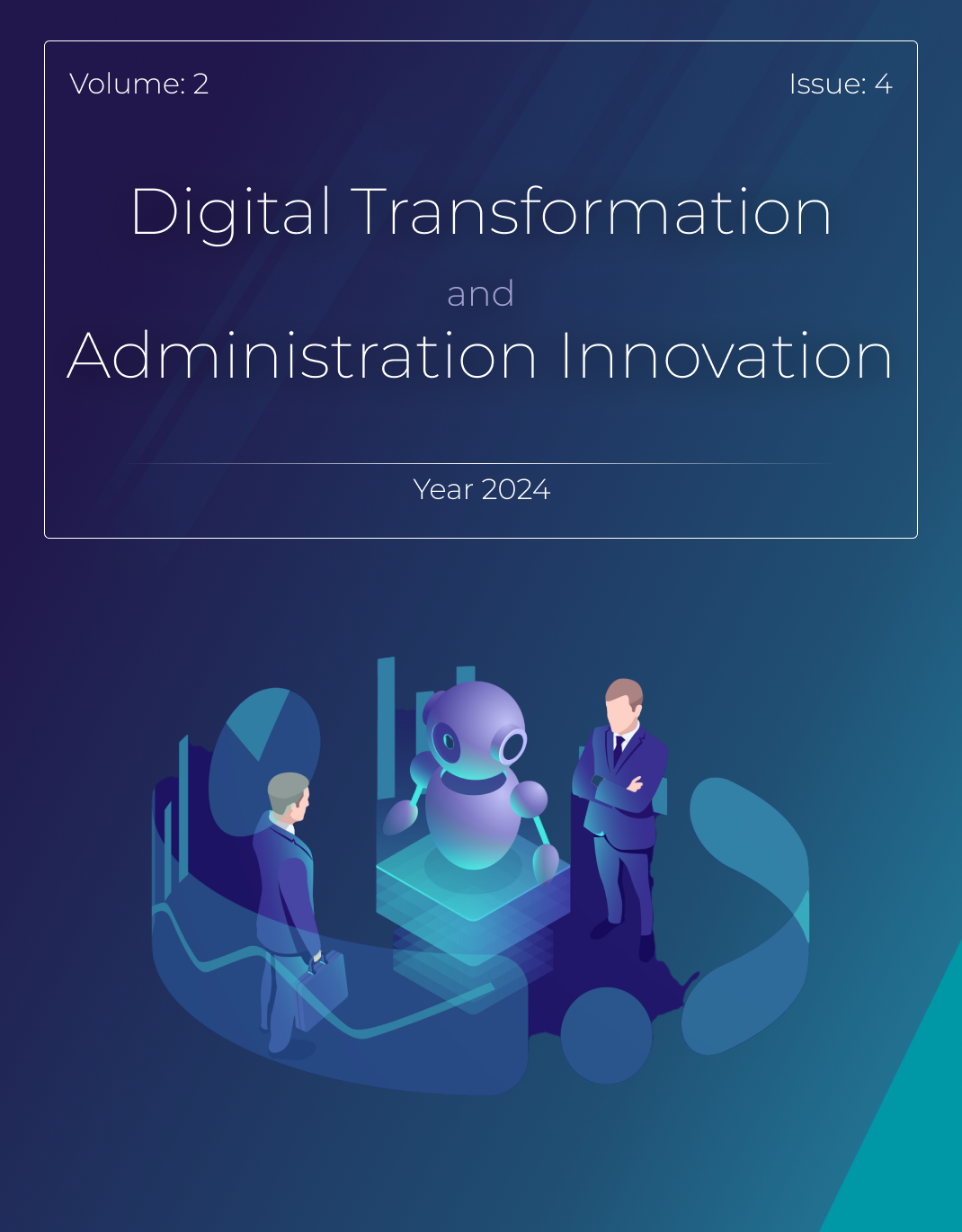Validation of the Banking Services Redundancy Model in Sepah Bank
Keywords:
Banking service redundancy, digital banking, customer experience, operational efficiency, AI-driven optimization, regulatory compliance, financial institutions, banking automationAbstract
This study aims to validate a banking service redundancy model for Sepah Bank to assess the impact of redundant banking services on operational efficiency, customer experience, and technological integration. The research employs a mixed-methods approach, integrating both qualitative and quantitative analyses. The qualitative phase involves a meta-synthesis of existing literature on banking service redundancy, digital banking optimization, and financial risk management. The quantitative phase utilizes survey data collected from 384 Sepah Bank customers and experts in banking service management. Structural equation modeling (SEM) and statistical validation techniques, including Cronbach’s Alpha, composite reliability, average variance extracted (AVE), and Fornell-Larcker criteria, are used to measure construct validity and reliability. Additionally, R² values, effect size (f²), and predictive relevance (Q²) are analyzed to assess the structural model's fit. The results indicate that excessive banking service redundancy leads to operational inefficiencies, increased costs, and diminished customer satisfaction. The structural model analysis revealed a strong R² value (0.996) for banking service redundancy, confirming the robustness of the validation model. The impact of redundancy on customer experience was found to be significant, aligning with prior studies on digital banking efficiency. Moreover, security redundancies, though necessary for regulatory compliance, were identified as a source of usability challenges. The study also highlights the role of AI and data analytics in optimizing banking service redundancy while maintaining regulatory and operational requirements. The study underscores the necessity of a structured validation framework to manage banking service redundancy effectively. Financial institutions must differentiate between operational redundancies that hinder efficiency and regulatory redundancies that are required for compliance. Leveraging AI-driven automation and predictive analytics can help banks streamline redundant services while maintaining security and customer satisfaction. The findings contribute to the broader discourse on digital banking optimization and offer practical insights for financial institutions seeking to enhance operational resilience and service efficiency.
Downloads
References
Banda, T., & Fanny, M. S. (2023). Bank Nkhonde. International Journal of Advanced Research in Science Communication and Technology, 284-291. https://doi.org/10.48175/ijarsct-11447
Boyko, V., & Василенко, М. Д. (2020). «smart City» in the Context of Cybersecurity: Incidents, Risks, Threats. Municipal Economy of Cities, 4(157), 184-191. https://doi.org/10.33042/2522-1809-2020-4-157-184-191
Della, K., Muhardi, & Cintyawati, C. (2022). Analisis Kualitas Pelayanan Dengan Menggunakan Metode Importance Performance Analysis Dalam Memaksimalkan Layanan Bank Woori Saudara Cabang Buah Batu Bandung. Bandung Conference Series Business and Management, 2(1). https://doi.org/10.29313/bcsbm.v2i1.2424
Kumar, S. L., Asish, Y. S., & Ganapathy, S. (2022). A New Hybrid CNN–LSTM Model With Non-Softmax Functions for Face Spoof Detection. Soft Computing, 26(19), 10151-10162. https://doi.org/10.1007/s00500-022-07418-9
Kwant, M., Smith, H., Kleermaeker, S. D., & Velden, C. t. (2023). A Cloud-Based End-to-End Flood Early Warning System for Greater Wellington. https://doi.org/10.5194/egusphere-egu23-15966
Lapidus, A., & Topchiy, D. (2021). Regulatory Support for the Redevelopment Design System. E3s Web of Conferences, 274, 06003. https://doi.org/10.1051/e3sconf/202127406003
Lozanovska, M. (2023). Port Kembla BHP Steelworks, Australia: Post-War Immigrant Histories of Architecture, Urbanism and Heritage. https://doi.org/10.55939/a5031paldo
Milkau, U. (2021). Operational Resilience as a New Concept and Extension of Operational Risk Management. Rmfi, 14(4), 408. https://doi.org/10.69554/qulw1579
Mohammad, S. J. A., & Ismail, F. L. M. (2024). The Effect of Banking Automation Perception on Customer Satisfaction in the Banking Sector of UAE. Sains Insani, 9(1), 129-138. https://doi.org/10.33102/sainsinsani.vol9no1.617
Muravskyi, V., Bryk, M., Muravskyi, V., & Reveha, O. (2023). Document Flow in Electronic Money Transactions in the Context of Accounting Information Support for Financial Security. World of Finance(1(74)), 117-132. https://doi.org/10.35774/sf2023.01.117
Nugroho, B., Purwanto, P., & Himawan, H. (2023). Enhancing Default Prediction in P2P Lending Using Random Forest and Grey Wolf Optimization-Based Feature Selection. Journal of Applied Intelligent System, 8(3), 363-375. https://doi.org/10.33633/jais.v8i3.9234
Pregnolato, M., Winter, A. O., Mascarenas, D., Sen, A. D., Bates, P., & Motley, M. R. (2020). Assessing Flooding Impact to Riverine Bridges: An Integrated Analysis. https://doi.org/10.5194/nhess-2020-375
Rafiq, M. (2019). Digital Banking Is an Important Ingredient for the Future of Banking. JDB, 4(2), 144. https://doi.org/10.69554/hltx7018
Salhani, A., & Mouselli, S. (2022). The Impact of Tier 1 Sukuk (Islamic Bonds) on the Profitability of UAE Islamic Banks. Journal of Financial Reporting and Accounting, 22(4), 796-810. https://doi.org/10.1108/jfra-12-2021-0461
Sam’an, M., Safuan, S., & Munsarif, M. (2024). Feature Selection in P2P Lending for Default Prediction Using Grey Wolf Optimization and Machine Learning. Bulletin of Electrical Engineering and Informatics, 13(5), 3609-3615. https://doi.org/10.11591/eei.v13i5.7651
Suzuki, N., Shirane, T., Morimura, T., & Nitta, H. (2021). Construction of Underground Service Tunnels as Part of Disaster Management. Iop Conference Series Earth and Environmental Science, 703(1), 012040. https://doi.org/10.1088/1755-1315/703/1/012040
Tiwari, S. (2023). Bank Record Storage Using Blockchain. International Journal for Research in Applied Science and Engineering Technology, 11(5), 6124-6129. https://doi.org/10.22214/ijraset.2023.53142
Tsobdjou, L. D., Pierre, S., & Quintero, A. (2024). A Framework for Security Assessment of Android Mobile Banking Applications. Comput. Networks Commun. https://doi.org/10.37256/cnc.2120243929
Vukov, D., Ilić, M., Cuк, M., & Igić, R. (2023). Environmental Drivers of Functional Structure and Diversity of Vascular Macrophyte Assemblages in Altered Waterbodies in Serbia. Diversity, 15(2), 231. https://doi.org/10.3390/d15020231
Watts, D. (2025). The Distribution and Functions of Food Support Organisations in Scotland and Their Implications for Policy. Scottish Affairs, 34(1), 37-69. https://doi.org/10.3366/scot.2025.0534
Yussof, S. A., & Al-Harthy, A. M. H. (2020). Cryptocurrency as an Alternative Currency in Malaysia: Issues and Challenges. Icr Journal, 9(1), 48-65. https://doi.org/10.52282/icr.v9i1.137
Zhang, H., Liu, Z., Hai-long, C., Yanhua, S., Zhi-gang, X., ruidong, Z., & Xu, L. (2019). Analysis and Solution of Frequent Start-Up of Incremental Differential Protection. Journal of Physics Conference Series, 1237(5), 052047. https://doi.org/10.1088/1742-6596/1237/5/052047
Zu, L., Li, H., Zhang, L., Lu, Z., Ye, J., Zhao, X., & Hu, S. (2023). E-Sawm: A Semantic Analysis-Based ODF Watermarking Algorithm for Edge Cloud Scenarios. Future Internet, 15(9), 283. https://doi.org/10.3390/fi15090283
Downloads
Published
Submitted
Revised
Accepted
Issue
Section
License
Copyright (c) 2024 Digital Transformation and Administration Innovation

This work is licensed under a Creative Commons Attribution-NonCommercial 4.0 International License.







